Photography Tips for your Next Canoe Trip
By: Dave Conley
As a full-time professional guide, I spend most of my time in the woods and water. Through experience spent outdoors, I have cultivated another passion: photography.
Because of what I do, I have ample opportunities to observe nature, wildlife, and the connection people have with the outdoors and each other. I enjoy capturing the feel of the wilderness experience, telling the story through images. After all, once the trip is over, photographs are an excellent way to preserve unforgettable memories and share your experience with others.
Whether you're an aspiring wildlife or landscape photographer or an amateur with a camera looking for helpful tips to enhance your final product, I'd like to offer some helpful advice and guidance from my years of experience outside with a camera.
CAPTURING EMOTION
Emotion is a powerful communicator. It conveys what a person may be feeling but also tells a story. I enjoy capturing images of people having a good time. On adventure trips, this tends to be relatively easy in the evenings while relaxing in camp after dinner, reliving the experiences of the day together. Maybe even over a game of cards near the campfire. Keep that camera handy to capture these special, candid moments.
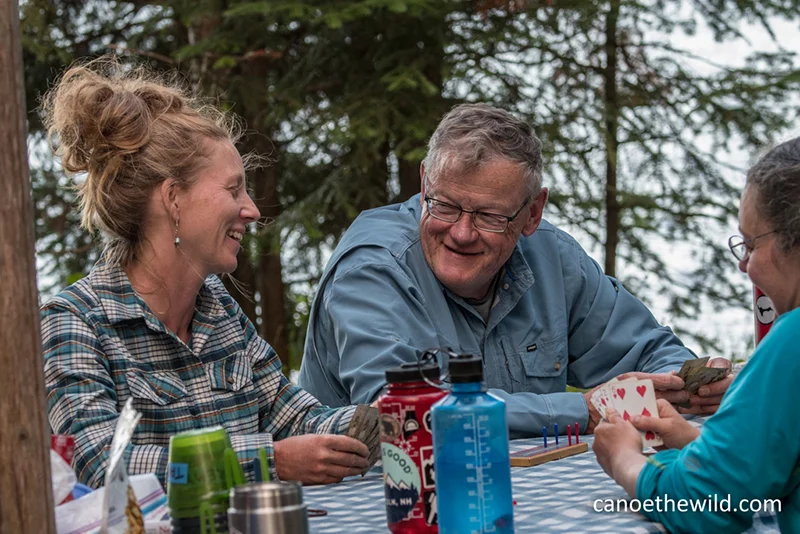
ACTION SHOTS AND MANUAL MODE
When my clients are looking for an action-packed wilderness canoe trip, a few trips spring to mind. Both in Quebec, the NE Mistassibi River and the Bonaventure River feature numerous Class II-III rapids, ledge drops, and gorges. In my home state of Maine, Little Falls on the St. Croix River and Chase Stream Rapids on the Allagash take the cake. These are great places to capture action and expression at the same time.
Expressions captured while navigating an action-filled portion of a river may show fear, concentration, or excitement! To capture emotions at just the right time with your camera, shooting position is critical.
For example, At Chase Stream Rapids on the Allagash, I paddle the first set of rapids first, positioning myself at the bottom of the rapid. I ask the paddlers to give me 5 minutes to navigate the rapids and get set up for the shot. I situate myself low to the water with the sun behind me. I set the camera in Manual mode and control shutter speed, aperture, and ISO settings. The camera's lens aperture (f-stop) a few clicks above the widest opening allows for more depth-of-field when focusing.
With my Nikon 80-400mm lens, setting the f-stop to 7.1 provides a greater depth of field, allowing both of the paddlers in the canoe to come into focus.
It's always about allowing enough light to enter the camera to capture the image, a balancing act between shutter speed, ISO, and aperture. A fast shutter speed is necessary to stop action, but in low light conditions, a fast shutter speed may not allow enough light in. Having the aperture wide open (lowest number) may not give enough depth of field to have both the stern and bow partners in focus. If you introduce too much artificial light (ISO), you'll end up with too much noise. My goal is to keep both paddlers in focus, so I try to get away with the slowest shutter speed and the widest aperture to stop action.
I avoid photographing mid-day, as the light tends to be less contrasted (shadows), resulting in less exciting images. In the picture below, while paddling an Old Town Discovery 169 canoe, it was approaching midday but had the advantage of tall fir trees on either side of the river, which diffused light.
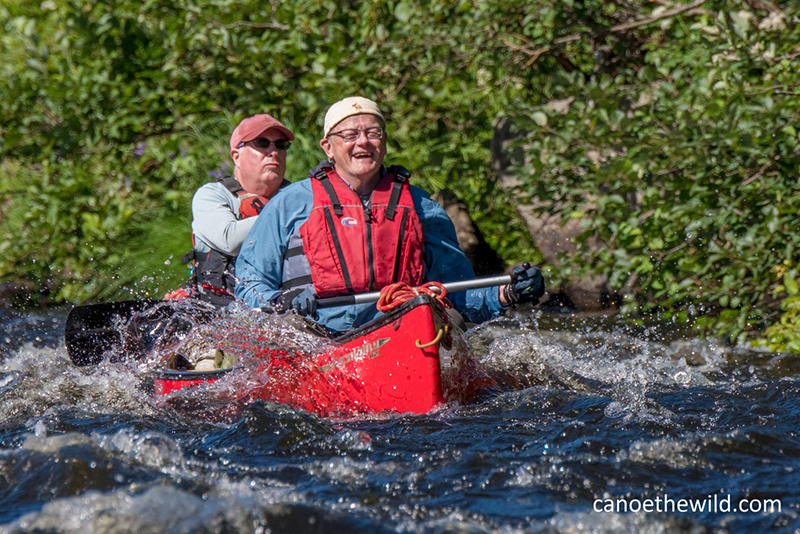
CAMERA EQUIPMENT
Cameras have come a long way in a few short years. From affordable point-and-shoot cameras to DSLRs to mirrorless cameras, options are endless. What you choose will depend mainly on your budget, skill level, and your appetite to learn and grow as a photographer.
Mirrorless cameras, such as the Sony A7, are more expensive, but there are many advantages. Mirrorless camera technology is new, offering high mega-pixels and better low light shooting capabilities, allowing for faster shutter speeds in low light situations stopping action resulting in a much better finished product. In post-production, editing images captured on a mirrorless will have less noise and greater cropping capabilities. And the video quality is fantastic as well.
Maybe you're new to photography and don't want to break the bank. There are many good point-and-shoot cameras on the market. Out-of-the-box, point-and-shoot cameras are set up to capture decent images without the need to mess with the settings. Many feature tilt displays where you can see the impact of your adjustments before you press the shutter button. If you are adventurous and want to experiment with your camera settings, turn off the automatic (A) mode. Try shooting in aperture priority or auto-ISO where you only control two of the functions, not all three at once.
Photography is like playing an instrument. It's one thing to have superior equipment. It's another to know how to use it. Nothing substitutes for good old-fashioned practice.
FIRST AND LAST LIGHT & A BIG BULL MOOSE
During the summer of 2020, while guiding canoe trips for first-timers on the Allagash, I spotted over 80 moose. Some moose were at a distance while others were up close, seemingly without a care in the world. We spotted several along the trip route. Others at first light or late afternoons, while taking short paddles to known moose habitat where we watched on as they fed on aquatic vegetation in the water.
Photography is all about lighting and subject matter. Dawn and dusk offer some of the best light and are also the best time to capture wildlife images as animals are most active at first and last light.
Last summer, while guiding my 8th Allagash canoe trip, I was greeted by fellow guide Wayne Daggett while exiting my tent early in the morning. He told me there was a moose in the marsh across from the campsite. I didn't give it much thought as I worked my way to the campfire to put the coffee on. Once my eyes adjusted, I could see the moose and noticed it was a big bull! Despite all of the moose sightings all summer, I hadn't seen many big bulls. I abandoned my coffee duties opting instead to grab my camera and tripod. As dawn gave way and the light increased, so did the ability to shoot with a higher shutter speed and lower ISO, producing a better-quality image.
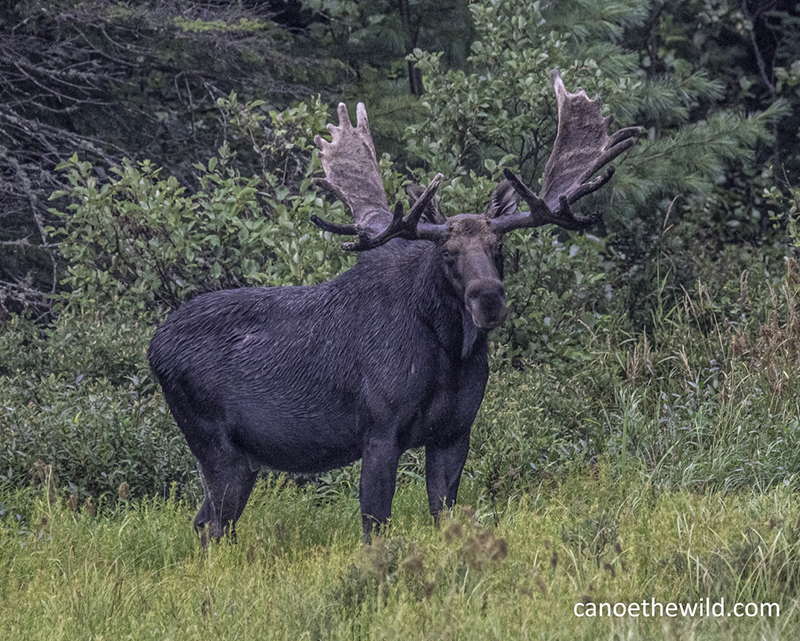
NIGHTTIME & SETTINGS
Many years ago, I guided a group of high school students from China on the St. Croix River. On the first night, the students stood on the shore staring into the night sky, amazed at how many stars they could see. They spoke about how the pollution (light and environmental) in China had kept them from experiencing the night sky like this before.
Remote wilderness trips such as the Allagash, Bonaventure, and NE Mistiassibi Rivers are entirely free of light pollution, providing excellent opportunities to take nighttime shots, including shots of the Milky Way and northern lights.
When taking pictures of the Milky Way, a clear night with a new moon is best. You'll need a tripod. Turn your camera's autofocus off and adjust to infinity and use the delayed shutter button. Be sure your framing includes an interesting foreground, such as an Old Town canoe. Another option is to use photo stacking, which involves taking two photos, layering them together in post-production editing. To photo stack, manually focus on the foreground in the first image, careful not to move your tripod. Focus on a distant point in the second image. For nighttime photography, set focus to infinity, expose for 30 seconds or less, ISO of 6400, aperture wide open.
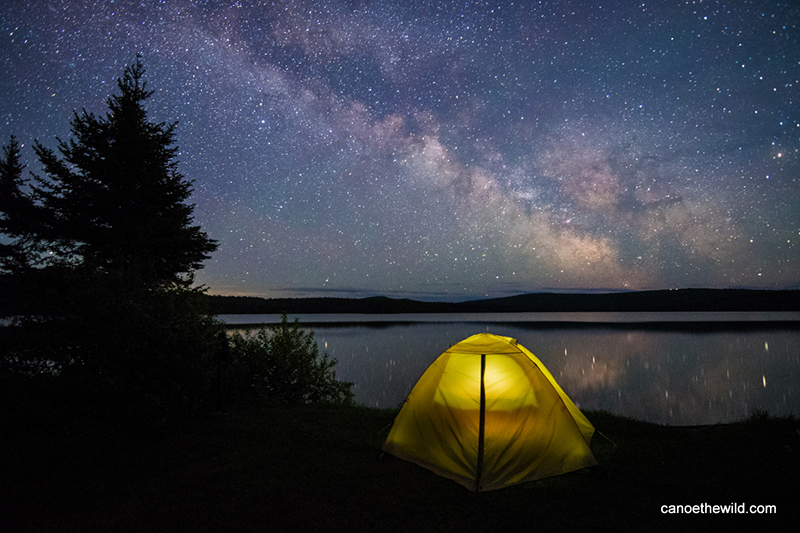
CAPTURING WILDLIFE ON THE MOVE
While on a canoe trip, you'll spend much of the time paddling, and it is a great time to capture wildlife images. Most often, especially with birds, you'll have to act quickly to capture an image. You never know what lies beyond the next bend, so keep your camera close. I can't tell you how many times I have rounded the bend to find a moose in the river within close proximity. That is why my waterproof case is always handy, with my camera and zoom lens (Nikon lens 80mm-400mm, 4.5-5.6).
So that my camera is ready to capture wildlife on the fly, I keep my settings on auto ISO and the aperture (f-stop) set to the lowest number. I put the camera to burst mode (ten frames per second), and the camera focus to continuous, which helps track a moving animal or bird. With these settings, all I need to do is adjust the shutter speed and begin shooting.
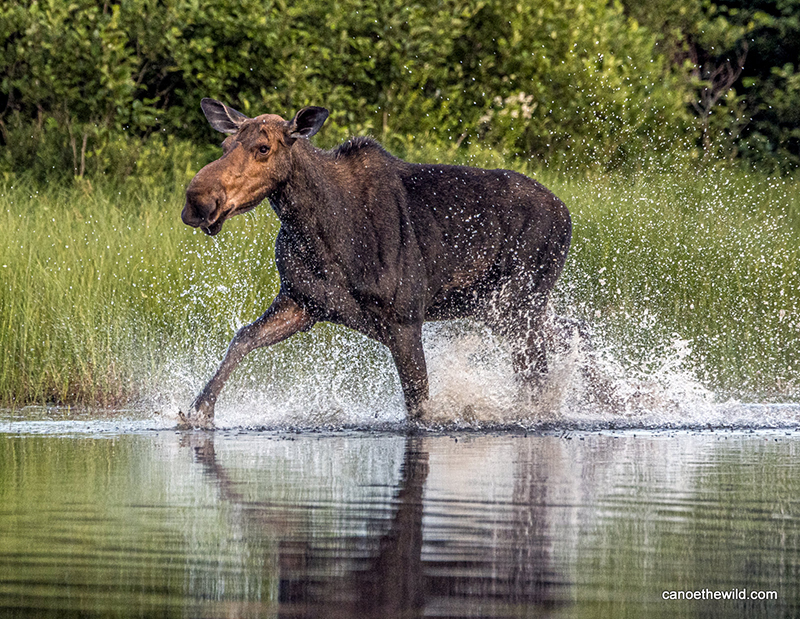
THE EYES HAVE IT
When photographing wildlife, always focus your camera on the eye while facing or broadside. It sure does make a better picture than their backside as they depart.
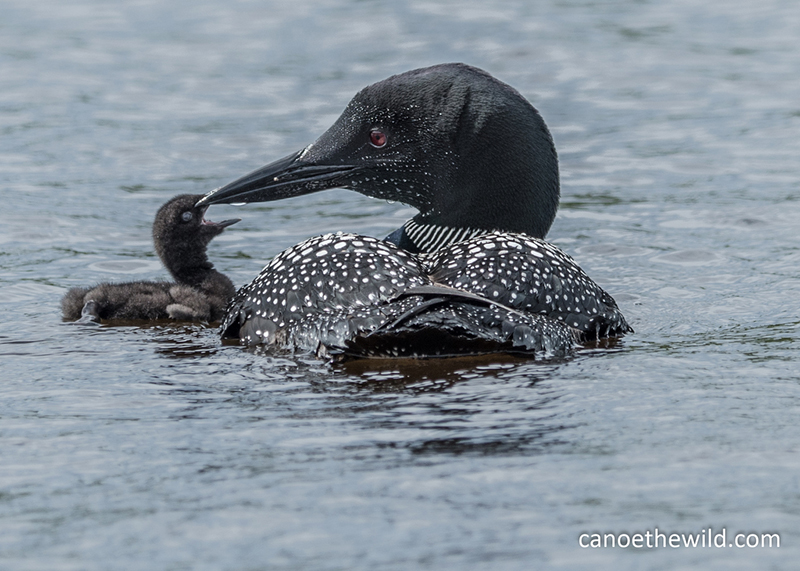
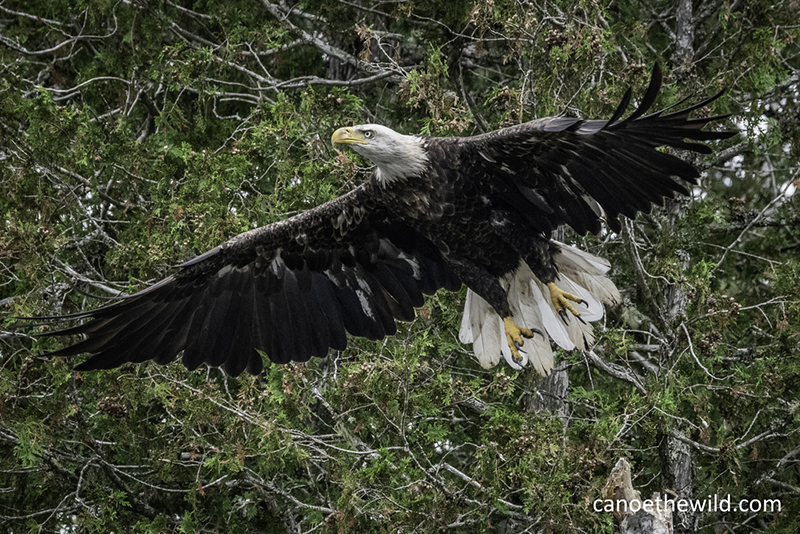
WEATHER
Even though we all long for a crystal clear day without a cloud in the sky, days like that tend to manufacture boring photos. Too much blue sky in an image can be uninteresting - kind of like a blank canvas before an artist applies paint to it. Clouds provide texture and depth, also helping to diffuse or filter light. I love photographing fog rising off the water and approaching and departing storm systems. Instances like this provide some of the best photography conditions.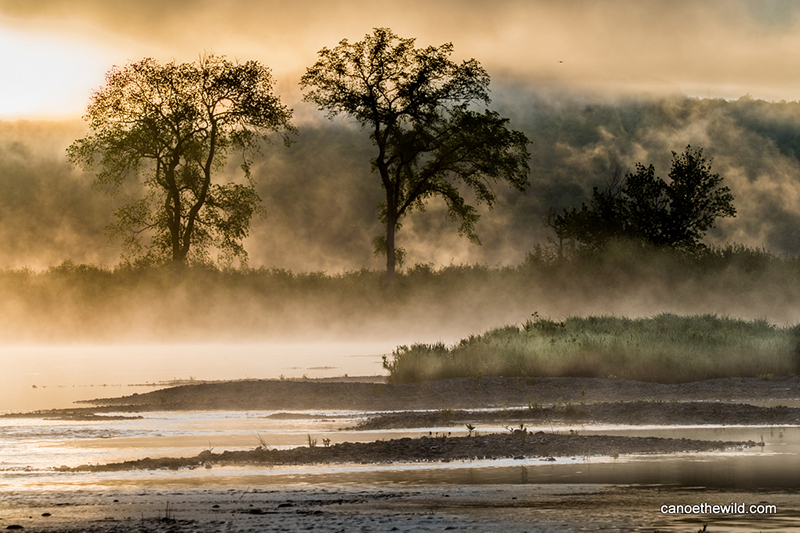
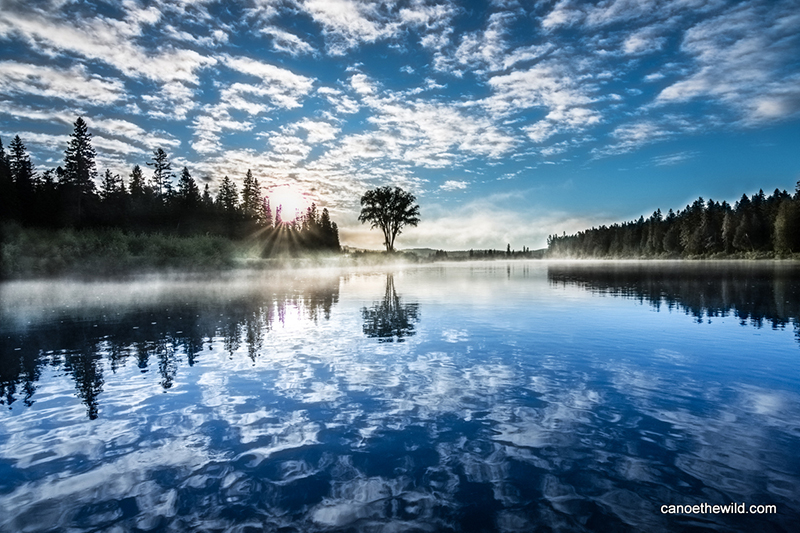
SCENERY & LANDSCAPE SHOTS
I prefer campsites that offer incredible wilderness scenery and opportunities for wildlife viewing. Since the best photography conditions exist early or late in the day, choosing the proper campsites should be strategic for serious or aspiring photographers. Plan to get up before sunrise and have your tripod ready. And if the forecast calls for a drop in temperature overnight, you can count on fog banks and great photography opportunities. When framing your subject, keep the rule of 3rds in mind. Avoiding straight lines, look for an interesting subject such as a mountain or a canoe, and utilize interesting light conditions.
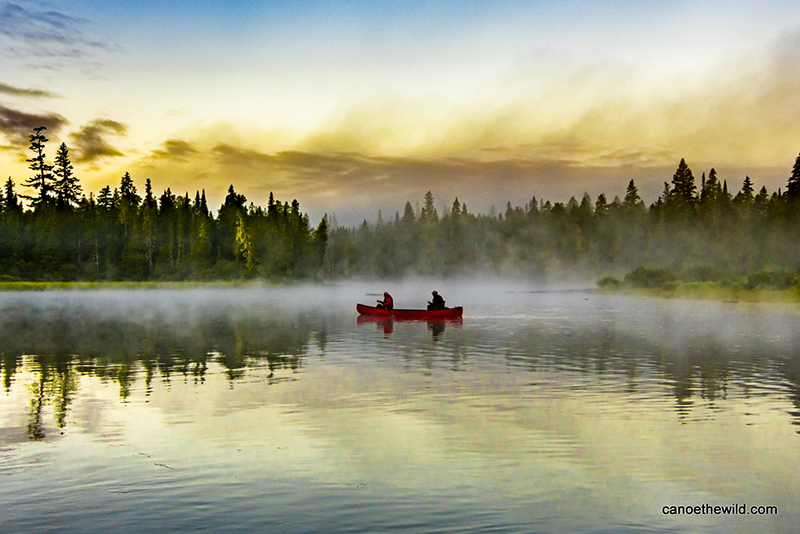
AFTER THE TRIP & SHOOTING IN RAW
Years ago, while guiding a moose photography trip during the moose rut in the fall for a seasoned photographer, he encouraged me to move away from shooting in JPEG format. Instead, he suggested that I switch to photographing in RAW format. He explained that the RAW format offers the photographer enhanced editing capabilities in post-editing. I am glad I took his advice, as it has improved my final product. When taking pictures in raw format, all the essential elements such as exposure, highlight, contrast, color, sharpening, etc., are unlocked, offering a full range of post-editing options.
PHOTOGRAPHY WORKSHOPS AND CANOE THE WILD
In partnership with Ben Williamson of Downeast Magazine, Canoe the Wild offers a 4-day photography workshop on the Allagash River each summer. Though 2021 is already full, we are planning two additional workshops in 2022. To discuss photography, book a canoe trip, or secure a spot in the next photography workshop, shoot me an email or give me a call. I am glad to answer any questions you may have.






